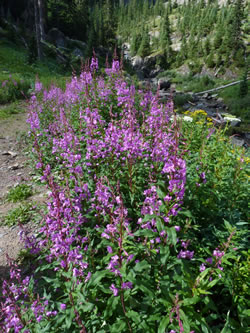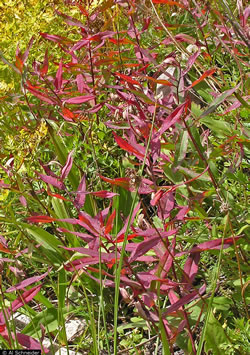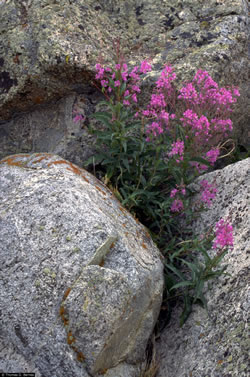Plant of the Week
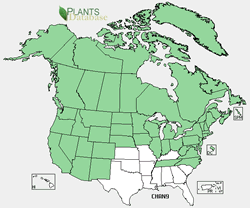 Range map of Chamerion angustifolium. States are colored green where the species may be found.
Range map of Chamerion angustifolium. States are colored green where the species may be found.
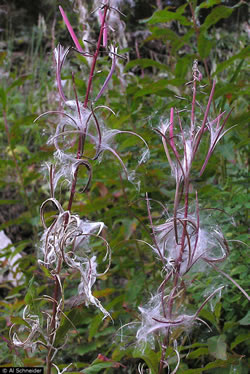 Chamerion angustifolium. Photo by Al Schneider.
Chamerion angustifolium. Photo by Al Schneider.
Fireweed (Chamerion angustifolium)
By Edna Vizgirdas
Fireweed is a tall showy wildflower that grows from sea level to the subalpine zone. A colorful sight in many parts of the country, fireweed thrives in open meadows, along streams, roadsides, and forest edges. In some places, this species is so abundant that it can carpet entire meadows with brilliant pink flowers.
The name fireweed stems from its ability to colonize areas burned by fire rapidly. It was one of the first plants to appear after the eruption of Mt. St. Helens in 1980. Known as rosebay willowherb in Great Britain, fireweed quickly colonized burned ground after the bombing of London in World War II, bringing color to an otherwise grim landscape. Fireweed is the official floral emblem of the Yukon Territory in Canada.
A member of the Evening Primrose family (Onagraceae), taxonomists previously included fireweed in the Epilobium (willowherb) genus, but it is now placed in the Chamerion (fireweed) group. The Evening Primrose family contains about 200 species worldwide.
A hardy perennial, fireweed stems grow from 4 to 6 feet high but can reach a towering 9 feet. The numerous long narrow leaves scattered along the stems are the origin of the species name "angustifolium" (Latin for narrow leaved). The leaves are unique; leaf veins are circular and do not terminate at the leaf edges. A spike of up to 50 or more pink to rose-purple flowers adorns the top of the stems from June to September. The four petals alternate with four narrow sepals, and the four cleft stigma curls back with age. Each flower is perched at the end of a long cylindrical capsule bearing numerous seeds. Seeds have a tuft of silky hairs at the end. A single fireweed plant can produce 80,000 seeds! The delicate fluffy parachutes can transport seeds far from the parent plant. The fluff was used by native peoples as fiber for weaving and for padding.
Fireweed was important to native people around the world. Choice patches of fireweed were even owned by high-ranking families in British Columbia. Tea was made from the leaves. High in vitamins A and C, fireweed shoots provided a tasty spring vegetable. Flowers yield copious nectar that yield a rich, spicy honey. Today, fireweed honey, jelly, and syrup are popular in Alaska where this species grows in abundance.
Fireweed can be a beautiful addition to the home garden. Since it reproduces readily from rhizomes as well as from seed, fireweed can quickly take over a garden if left unattended. You will be rewarded for your efforts however, since the colorful flowers are sure to attract lots of pollinators.


